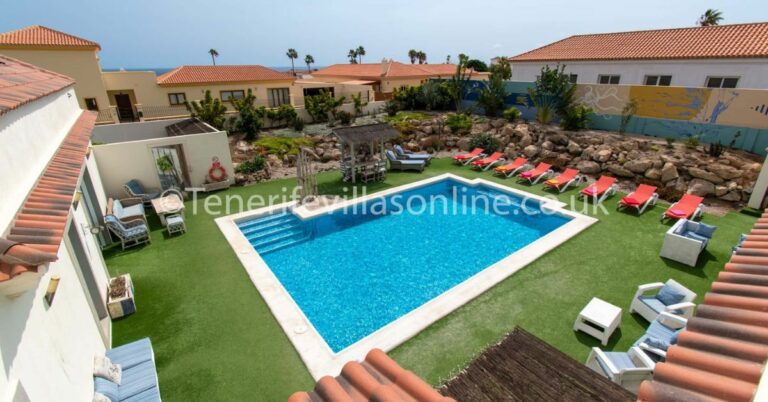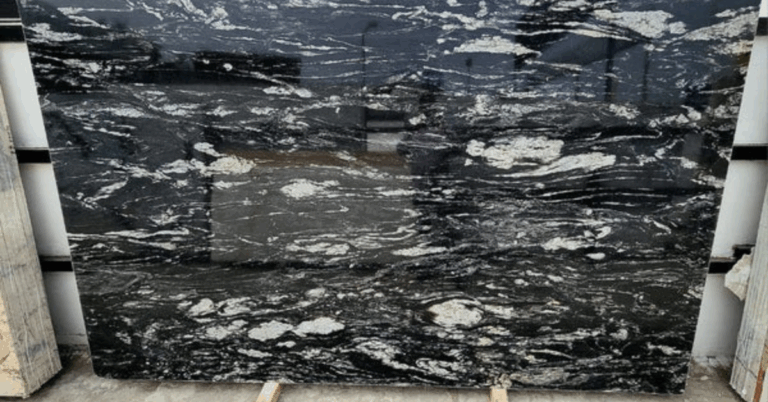HVLS Fan Singapore: Transforming Comfort, Efficiency, and Airflow
In the tropical heat and humidity of Southeast Asia, maintaining comfortable indoor conditions is a big challenge. This is where HVLS Fan Singapore solutions come into play. These high-volume, low-speed (HVLS) fans are engineered to move large amounts of air gently and efficiently, creating a natural breeze effect that significantly enhances comfort in commercial, industrial, and institutional spaces. Among the offerings in the market, the Apache Series HVLS Fan stands out for its blend of performance, durability, and innovation. In this article, we explore how HVLS fans are revolutionizing air circulation in Singapore and beyond, and what makes the Apache Series a compelling choice.
What Is an HVLS Fan — And Why It Matters
HVLS fans are ceiling-mounted fans with large diameters (typically several meters) that rotate slowly to displace substantial volumes of air. Rather than generating turbulent high-speed wind, they push a column of air downward, creating a broad, consistent airflow pattern that “pancakes” out across the floor and gently circulates throughout the room.
This contrasts with conventional small, high-speed fans that create spot cooling but often leave areas stagnant and generate more noise and drafts. HVLS fans, on the other hand, offer:
-
Better air distribution — the breeze spreads evenly rather than concentrated in one spot
-
Lower noise levels — because the blades move slowly
-
Energy efficiency — less power is needed compared to many smaller units running at full speed
-
Reduced HVAC load — by improving circulation, they help air conditioning systems perform more effectively
In warm, humid climates like Singapore’s, these attributes are especially valuable. Environments such as production plants, warehouses, showrooms, gyms, auditoriums, and large retail halls often suffer from uneven cooling or stale air pockets. HVLS fans help balance conditions, making spaces more comfortable, healthier, and more cost-effective to operate.
Key Benefits of HVLS Fan Singapore Deployments
Let’s look at the core advantages of using HVLS fans in Singapore and similar tropical settings:
1. Enhanced Comfort with Natural Breeze Feel
Because HVLS fans mimic a gentle breeze rather than a concentrated jet of air, occupants experience a more pleasant, natural airflow. This avoids uncomfortable gusts and allows people to feel cooler without over-chilling the space.
2. Energy Savings & Lower Operating Costs
By improving air circulation, HVLS fans allow businesses to raise thermostat setpoints on air conditioners without sacrificing comfort. The improved mixing of air means cooling systems don’t need to work as hard. Over time, this leads to significant savings on utility bills.
3. Reduced HVAC System Strain
HVLS fans help prevent stratification (hot air accumulating at ceiling height) and support more uniform temperature distribution. This lessens the load on HVAC systems, which can extend their lifespan and reduce maintenance costs.
4. Scalable to Large Spaces
Whether it’s a warehouse, logistic hub, or large showroom, HVLS fans are scaled to the space. A single large fan can cover an area that might require multiple smaller units — simplifying installation, control, and maintenance.
5. Quiet and Low Maintenance
Since HVLS fans operate at low speeds, noise levels are minimal. Moreover, their simpler mechanical structure compared to many cooling systems means fewer parts that might fail or require replacement.
6. Improved Indoor Air Quality & Ventilation
By constantly moving air, HVLS systems help reduce stagnation, remove pockets of warm air, and can augment ventilation. This benefit is especially relevant in hot, humid climates, where humidity control and airflow are crucial.
The Apache Series HVLS Fan: A Closer Look
One of the notable offerings in the Singapore market is the Apache Series HVLS Fan. Designed to meet demanding real-world requirements, this series delivers a combination of performance, aesthetics, and reliability. Below are some of its defining features:
Technical Highlights & Design Features
-
Variable speed control with IP65 protection – enabling flexible adjustment to match ambient conditions while resisting dust and moisture.
-
High-efficiency external rotor motor – crafted for quiet operation, long life, and lower energy use.
-
Blade design optimized for airflow – the Apache Series features specially shaped blades that maximize air displacement while minimizing turbulence and noise.
-
Multiple size options – the series supports various diameters to suit different hall sizes and ceiling heights, making it adaptable across industries.
-
Durability & build quality – constructed from materials that withstand continuous operation, especially in semi-industrial or humid environments.
Performance Metrics
-
Large air volumes: In larger models, the Apache Series can deliver airflow in the order of 10,000+ m³/min.
-
Quiet operation: Typical noise levels are kept modest (e.g. ~38 dB in certain configurations).
-
Power consumption tuning: The system is engineered so that even larger fans can run efficiently without excessive energy draw.
-
Blades & motor mass balanced to reduce vibration and wear.
Applications & Use Cases
The Apache Series is suited for a wide range of environments:
-
Warehouses and logistic centers
-
Factories and production floors
-
Commercial showrooms and exhibition halls
-
Sports halls, gyms, and fitness centers
-
Large retail spaces
-
Educational institutions and auditoriums
In Singapore or in similarly tropical, humid locales, the Apache Series helps manage indoor climates in places where traditional cooling might struggle or become cost-prohibitive.
Designing a Successful HVLS Fan Singapore Implementation
To get the best from an HVLS fan in Singapore or similar climates, it’s not enough just to install one — the design, installation, and operational practices all matter. Here are some considerations:
1. Proper Sizing & Placement
Choose the correct diameter and number of fans to cover the floor space adequately. Overlapping airflow zones should ensure that no “dead spots” remain. Ceiling height, roof structure, and clearance requirements also play a major role in fan placement.
2. Integration with HVAC
HVLS fans work best when coordinated with the air conditioning system. Usually, fans run continuously, while the A/C cycles on demand. This synergy allows for relaxed thermostat settings without losing comfort.
3. Controls & Automation
Employ intelligent controllers that can vary fan speed based on conditions such as temperature, humidity, or occupancy. Advanced systems may integrate with building management systems (BMS) for seamless control.
4. Maintenance & Inspection
Periodic inspection is needed to check for blade alignment, motor health, bearing lubrication, and vibration. Because HVLS fans run slowly, wear is relatively low, but preventive checks ensure longevity.
5. Acclimatisation to Region
In Singapore’s humid, salty, or coastal environments, choose models with protective coatings or corrosion resistance. Ensure sealed motors and appropriate ingress protection (like IP65) to guard against dust, moisture, and environmental exposure.
6. Safety & Compliance
Ensure adequate safety clearances from overhead beams or trusses. Use guard grills or safety cables as needed. Comply with local building and safety codes relating to overhead equipment.
Challenges & Considerations
While HVLS fans offer many advantages, some challenges and considerations must be addressed:
-
Initial investment costs: The upfront cost is higher than that of small conventional fans, though ROI through energy savings often compensates over time.
-
Ceiling structure: The roof or ceiling must be capable of supporting the weight and dynamic load of large fans, which may require structural reinforcement.
-
Airflow boundaries: In extremely large, open, or compartmentalized areas, multiple fans may be necessary to avoid dead zones.
-
Perception & comfort tuning: Some occupants may initially feel subtle drafts if fan speeds aren’t optimally tuned. Proper commissioning is essential.
-
Maintenance access: Ensure safe access for inspection and servicing, particularly at higher ceiling installations.
Why Apache Series Stands Out in the Singapore Market
Given the demands of Singapore’s climate and building typologies, the Apache Series HVLS fan presents a strong value proposition:
-
Tailored for tropical conditions — with IP65 controllers and corrosion-resistant construction
-
Versatile sizing — multiple diameters allow matching to different spaces
-
Quiet, efficient operation — ensures occupant comfort without noise intrusion
-
Reputation & support — local familiarity and service ecosystem help with maintenance and availability
-
Reduced total cost of ownership — strong materials and efficient motor design reduce ongoing costs
Case Example & Imaginary Scenario
Imagine a large logistics warehouse in Singapore, spanning 10,000 m² with a 9 m ceiling height. Without proper airflow, the upper air becomes hot and stagnant, while workers near loading docks feel uncomfortable. The cooling system struggles to keep uniform temperature across zones. By installing six Apache Series HVLS fans (appropriately sized), the warehouse management is able to:
-
Lower the thermostat setting by 2 °C while maintaining comfort
-
Reduce HVAC run time by 20–30%
-
Eliminate hot pockets and improve worker satisfaction
-
Maintain quieter operation compared to using multiple smaller fans
-
Recover the investment in energy savings within a few years
This scenario illustrates how the combination of engineering, controls, and smart deployment can yield strong results.
Conclusion
In the context of Singapore’s tropical climate, managing indoor comfort effectively is crucial for productivity, energy efficiency, and occupant well-being. HVLS fan Singapore systems, especially advanced offerings like the Apache Series, deliver a compelling solution that bridges the gap between mere ventilation and true environmental control. By promoting uniform airflow, reducing HVAC strain, and doing so quietly and economically, these fans are redefining how large indoor spaces are cooled and ventilated.
If you’re considering an HVLS solution for your commercial, industrial, or institutional facility in Singapore (or elsewhere in similar climates), evaluating options like the Apache Series with respect to sizing, control integration, and maintenance will be key. With thoughtful design and support, such systems can deliver long-term comfort, energy savings, and reliable performance.







